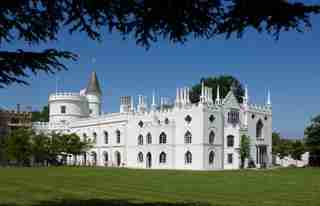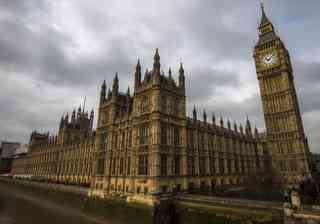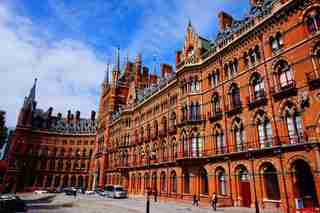The rebirth of Gothic architecture began in the United Kingdom in the late 1700s. The movement was fueled in part by a literary obsession with medieval times—think knights, castles, and monasteries. Starting with Strawberry Hill , the fanciful home of a Gothic novelist, the nostalgic movement spread across the country. Gothic Revival architecture, unlike original Gothic architecture, was used in many types of buildings—not only religious ones. Medieval elements were even incorporated into the façades of otherwise ordinary buildings. By the end of the 19th century, London was the epicenter of monumental Gothic Revival architecture. The century gave a new elegance, and new life, to the style. Here are five of the best Gothic Revival buildings in London.

Strawberry Hill
This is the earliest known example of Gothic Revival. Strawberry Hill was the home of the author Horace Walpole. He bought the house in 1747 and transformed it into a medieval-style castle, like the one in his novel, The Castle of Otranto. Early Gothic Revival in the UK was highly romanticized and quite clunky.

Palace of Westminster
One of London’s most iconic buildings, the Palace of Westminster houses the British parliament and is the home of Big Ben. Sir Charles Barry designed this structure after the first Westminster Palace was destroyed by fire in 1834.

St. Pancras Railway Station
St. Pancras Railway Station was designed in 1868 by Sir William Henry Barlow. The redbrick structure is far from a pure representation of Gothic architecture, but rather a monumental Victorian structure that borrowed liberally from the Gothic aesthetic.
33–35 Eastcheap
The façade of this Robert Lewis Roumieu–designed building is a flamboyant display of the most ornate aspects of medieval architecture. It’s safe to say the innovators of the Gothic era did not foresee their designs being emulated on a mid-block low-rise London building.
Tower Bridge
Tower Bridge is one of the later examples of Gothic Revival architecture in London. By the 1890s, architects were inspired by the success of earlier Gothic Revival monuments.